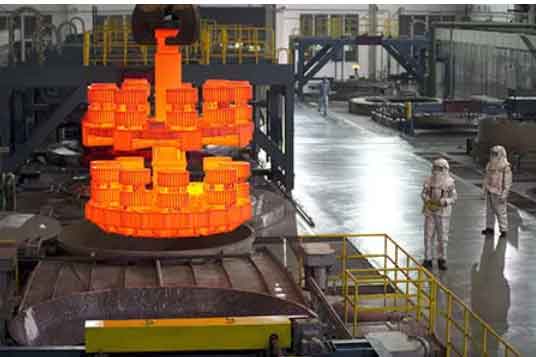Heat treatment is a commonly employed method to enhance the strength and durability of spur gears. It involves controlled heating and cooling processes that modify the microstructure of the gear material, thereby improving its mechanical properties. The specific heat treatment techniques used for spur gears may vary depending on the material composition and desired characteristics. However, the following are some commonly used methods:

- Carburizing: Carburizing is a heat treatment process that introduces carbon into the surface layer of the gear material. The gear is heated in a carbon-rich environment at high temperatures, allowing carbon atoms to diffuse into the surface. This results in a hardened case with increased wear resistance, while maintaining a relatively tough core.
- Quenching and Tempering: Quenching involves rapidly cooling the gear after heating to obtain a hard, martensitic structure. This process increases the gear’s hardness but may also make it brittle. To restore toughness and reduce brittleness, the gear is then subjected to tempering, which involves reheating it to a specific temperature and holding it for a certain period before cooling. Tempering balances hardness and toughness, resulting in improved strength and durability.
- Induction Hardening: Induction hardening is a localized heat treatment technique that selectively hardens specific areas of the gear, such as the tooth surface. A high-frequency alternating current is passed through a coil, generating an intense electromagnetic field. This field induces a current in the gear’s surface, heating it rapidly. Subsequent quenching ensures hardening of the heated region while maintaining the bulk material’s properties.
- Nitriding: Nitriding involves introducing nitrogen into the gear’s surface layer to form a hard compound called nitrides. The gear is heated in an atmosphere rich in nitrogen, typically ammonia gas, at temperatures below the material’s critical point. Nitriding enhances wear resistance, fatigue strength, and corrosion resistance while maintaining the gear’s toughness.
- Shot Peening: Shot peening is a mechanical surface treatment method that involves bombarding the gear’s surface with small metallic or ceramic particles at high velocities. This process induces compressive stresses in the surface layer, improving the gear’s resistance to fatigue and cracking.
It is worth noting that the selection of the appropriate heat treatment method depends on various factors, including the gear material, desired properties, and specific application requirements. The gear manufacturer or a materials engineer can provide specific recommendations based on these considerations.
